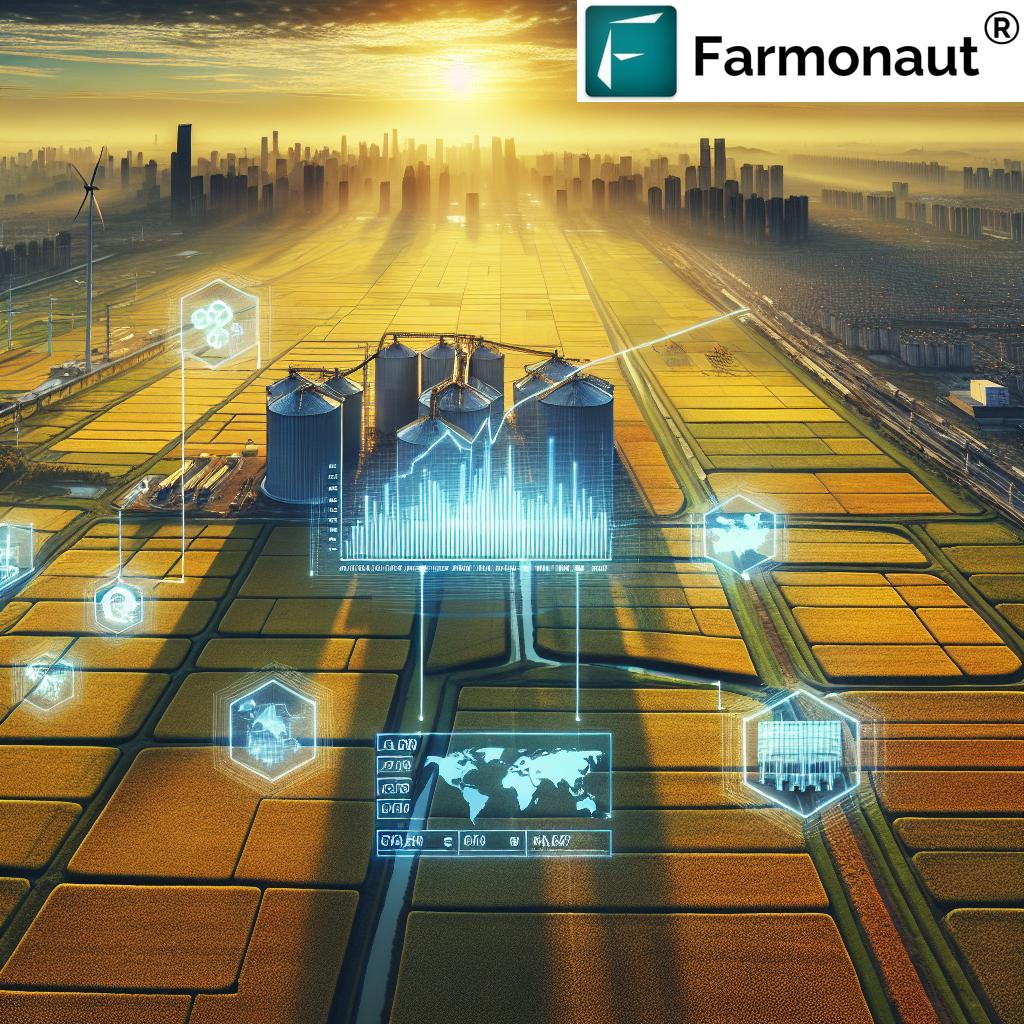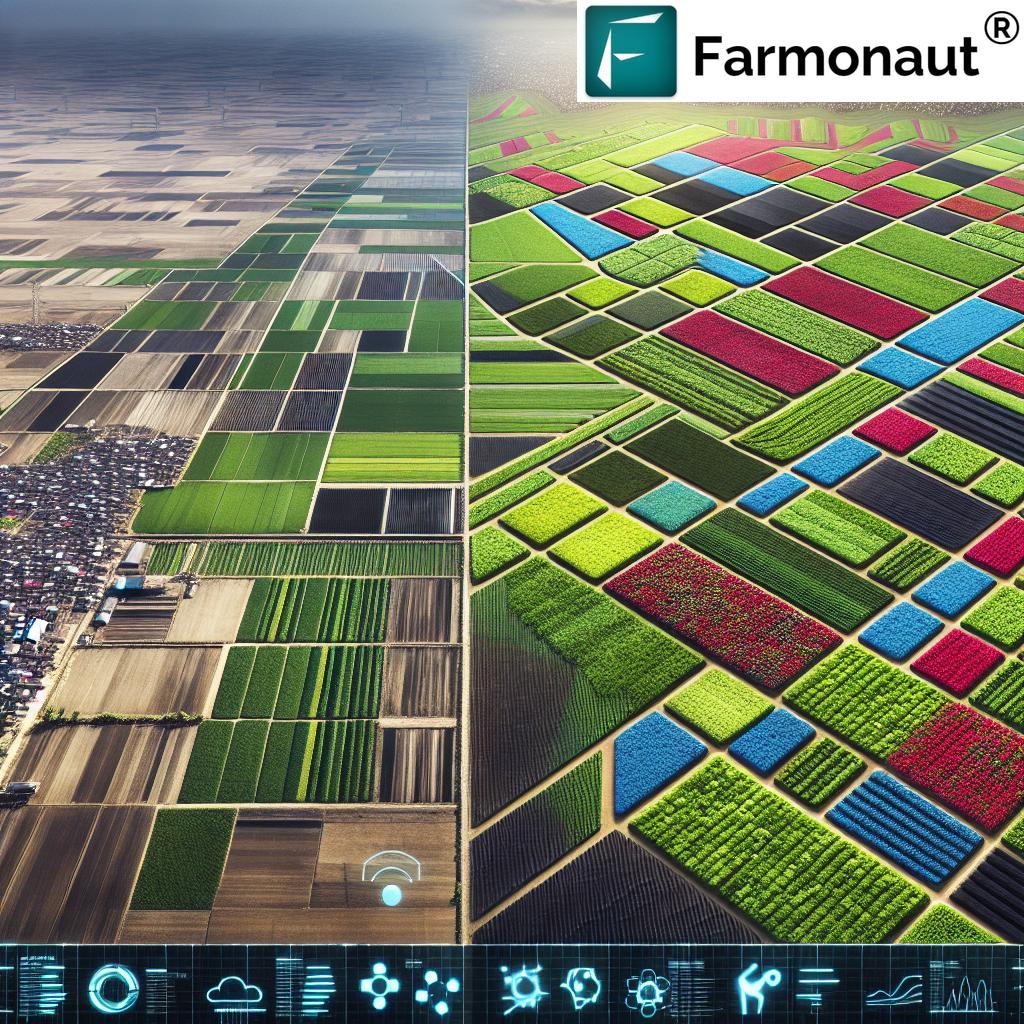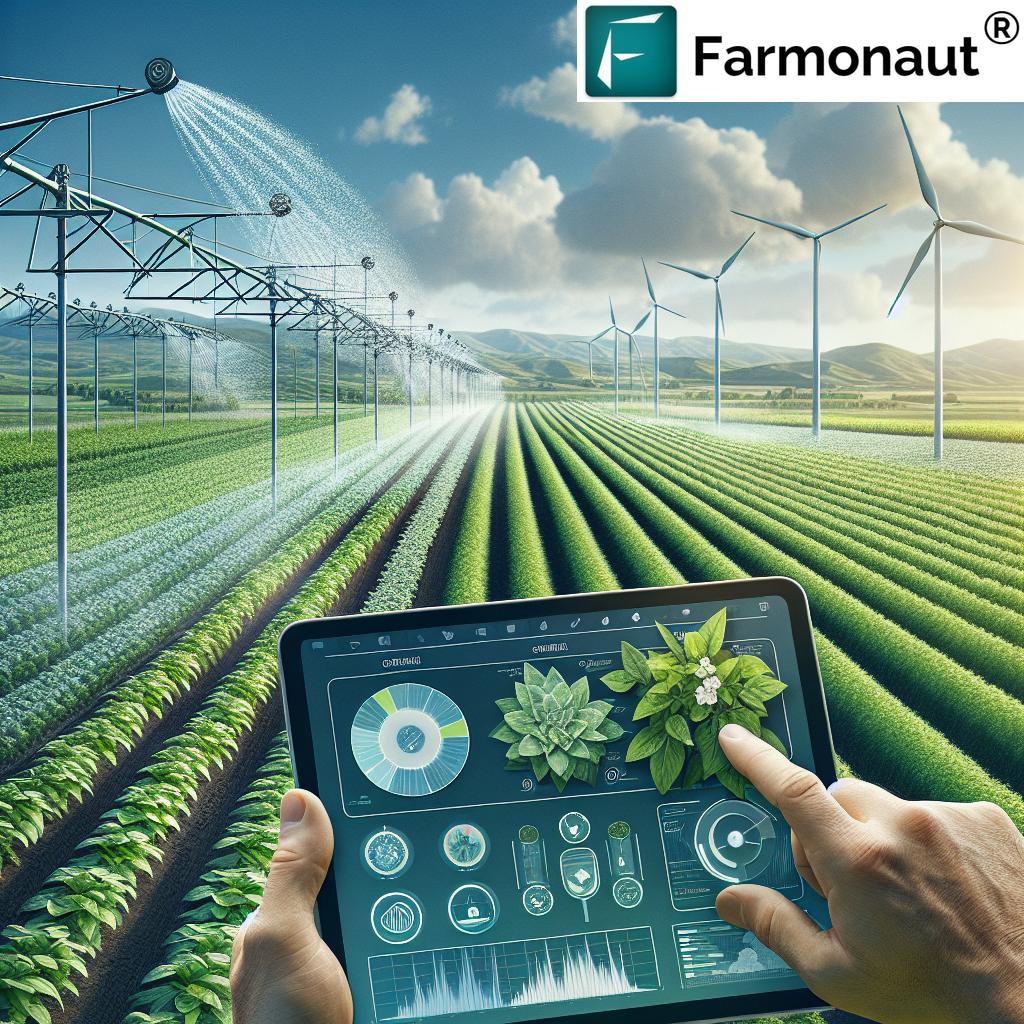China’s Rice Stocks Surge: How It Could Reshape Global Feed Markets and Commodity Prices

“China holds 70% of the world’s rice stocks, potentially reshaping global agricultural markets with its policy decisions.”
In the ever-evolving landscape of global agriculture, a seismic shift is on the horizon. China, the world’s largest holder of rice stocks, is considering a move that could send ripples through international grain markets and reshape the dynamics of feed markets worldwide. As we delve into this complex issue, we’ll explore the potential impacts on agricultural commodity prices, livestock feed sources, and the delicate balance of global food security.
The Rice Giant: China’s Stockpile and Its Global Implications
China’s rice stocks have surged to unprecedented levels, with the country now holding an astounding 70% of the world’s rice reserves. This massive stockpile isn’t just a statistic; it’s a potential game-changer for global agricultural markets. The Chinese government is contemplating the release of a significant portion of these stocks for alternative uses, primarily as livestock feed and for ethanol production.
This decision could have far-reaching consequences, affecting everything from international grain trade to feed market trends. To understand the magnitude of this situation, let’s break down the key factors at play:
- Global rice stocks: China’s dominance in rice storage has created an imbalance in the global supply chain.
- Corn feed alternatives: The potential influx of rice into feed markets could disrupt traditional corn-based feed systems.
- Agricultural commodity prices: A shift in rice utilization could trigger price fluctuations across various agricultural products.
- Livestock feed sources: Farmers worldwide may need to reconsider their feed strategies in light of these changes.
The USDA’s Analysis: A Glimpse into Potential Market Shifts
The United States Department of Agriculture (USDA) has conducted a thorough analysis of the potential impacts of China’s rice stock release. Their findings paint a picture of significant changes in the global agricultural landscape:
- Corn prices could face downward pressure as rice enters the feed market.
- Global food prices might experience fluctuations as the supply-demand balance shifts.
- International grain trade patterns could be altered as countries adjust to new market realities.
“The USDA analysis suggests China’s rice release could significantly impact corn feed alternatives and global food prices.”
As we navigate these complex market dynamics, it’s crucial for farmers, policymakers, and agribusinesses to have access to reliable data and analysis tools. This is where advanced agricultural technology solutions, such as those offered by Farmonaut, come into play. Farmonaut’s satellite-based farm management platform provides valuable insights that can help stakeholders make informed decisions in this changing landscape.
China’s Agriculture Policy: A Catalyst for Global Change
China’s decision to potentially release its rice stocks is not made in isolation. It’s part of a broader agriculture policy aimed at addressing several domestic and international concerns:
- Optimizing resource utilization and reducing storage costs
- Supporting the growing demand for animal feed in China’s expanding livestock sector
- Promoting sustainable agricultural practices and reducing food waste
- Balancing domestic production with international market trends
These policy decisions have the potential to influence rural populations and natural resource management not just within China, but across the globe. As the world’s most populous country and a major player in global agriculture, China’s actions can set off a chain reaction affecting farmers, consumers, and economies worldwide.
The Intricate Balance: Production, Imports, and Storage
Understanding the intricate balance between rice production, imports, and storage is crucial for grasping the full impact of China’s potential move. Let’s break down these components:
Production
China is the world’s largest rice producer, with annual yields reaching millions of metric tons. However, domestic consumption doesn’t always align with production levels, leading to surplus accumulation.
Imports
Despite its massive production, China still imports rice to meet specific market demands and maintain strategic reserves. Any change in China’s import patterns could significantly affect global rice trade.
Storage
The sheer volume of China’s rice stocks presents both opportunities and challenges. While it ensures food security, it also incurs substantial storage costs and raises questions about efficient resource utilization.
This delicate equilibrium is now poised for a potential shift, with implications that could ripple through the global economy. As we consider these factors, it’s clear that data-driven decision-making will be more critical than ever for all stakeholders in the agricultural sector.
The Potential Impact on Global Feed Markets
The introduction of significant quantities of rice into the global feed market could lead to a paradigm shift in how we approach animal nutrition. Here’s how this could play out:
- Diversification of feed sources: Livestock producers may have more options, potentially reducing their reliance on traditional corn-based feeds.
- Price competition: Increased availability of rice as feed could drive down prices for other feed grains, benefiting farmers but potentially impacting grain producers.
- Nutritional considerations: The shift to rice-based feed could necessitate adjustments in animal diets to ensure optimal nutrition and health.
- Supply chain adaptations: Feed manufacturers and distributors may need to modify their processes and logistics to accommodate the new feed source.
These changes could have far-reaching effects on the entire agricultural value chain, from crop farmers to livestock producers and ultimately to consumers.
Commodity Prices: A Ripple Effect
The potential release of China’s rice stocks is likely to trigger a domino effect on various agricultural commodity prices. Here’s what we might expect:
- Rice prices: An initial decrease due to increased supply, followed by potential stabilization as markets adjust.
- Corn prices: Downward pressure as rice competes as a feed alternative.
- Wheat and other grains: Possible price adjustments as the overall grain market rebalances.
- Meat prices: Potential decrease in production costs could lead to more competitive meat prices for consumers.
These price fluctuations could have significant implications for food security, especially in developing countries that rely heavily on rice imports. It’s a complex interplay of supply and demand that will require careful monitoring and strategic planning by all involved parties.
Farmonaut’s API and API Developer Docs provide valuable tools for analyzing these market trends and making data-driven decisions.
The Role of GIS and Remote Sensing in Navigating Market Changes
In an era of rapid market shifts, Geographic Information Systems (GIS) and remote sensing technologies are becoming indispensable tools for the agricultural sector. These technologies offer several advantages:
- Real-time crop monitoring to predict yields and market supply
- Analysis of land use changes in response to market pressures
- Optimization of supply chains and logistics in the face of changing feed sources
- Assessment of environmental impacts of agricultural policy decisions
Farmonaut’s advanced satellite-based solutions exemplify how these technologies can be leveraged to navigate complex market changes. By providing accurate, timely data on crop health, soil conditions, and weather patterns, Farmonaut empowers farmers and policymakers to make informed decisions in a rapidly evolving agricultural landscape.
Global Food Security: Balancing Act in a Changing World
The potential release of China’s rice stocks brings the issue of global food security into sharp focus. While increased availability of rice for feed could potentially lower food prices in some areas, it also raises questions about long-term sustainability and equitable distribution of food resources. Key considerations include:
- Ensuring stable food supplies for vulnerable populations
- Maintaining biodiversity in agricultural systems
- Balancing the needs of human consumption with animal feed requirements
- Adapting to climate change impacts on crop production
As we navigate these challenges, the importance of data-driven decision-making becomes ever more apparent. Tools like Farmonaut’s satellite-based crop monitoring can play a crucial role in optimizing resource allocation and enhancing food security on a global scale.
Environmental Considerations: A Delicate Balance
The shift in rice utilization from human consumption to animal feed and ethanol production raises important environmental questions:
- Land use changes: How will agricultural landscapes adapt to changing market demands?
- Water resource management: Rice cultivation is water-intensive; will this shift alleviate pressure on water resources?
- Carbon footprint: What are the implications for greenhouse gas emissions in livestock and ethanol production?
- Biodiversity: How will changes in crop patterns affect local ecosystems?
These environmental factors are intrinsically linked to agricultural productivity and sustainability. Farmonaut’s tools for carbon footprint tracking and resource management can provide valuable insights for addressing these complex environmental challenges.
The Future of Agricultural Markets: Adaptation and Innovation
As we look to the future, it’s clear that the agricultural sector must be prepared to adapt to rapidly changing market conditions. This includes:
- Embracing technological innovations in farming and supply chain management
- Developing more resilient and diverse crop systems
- Enhancing international cooperation on food security issues
- Investing in research and development for sustainable agricultural practices
The potential release of China’s rice stocks is just one example of how global agricultural markets can be reshaped by policy decisions. By staying informed and leveraging advanced technologies, stakeholders across the agricultural sector can position themselves to thrive in this dynamic environment.

Comparative Analysis of Global Rice Stocks and Market Impact
| Country/Region | Current Rice Stocks (million tons) | % of Global Rice Stocks | Potential Rice Release for Feed (million tons) | Projected Impact on Feed Markets (%) | Estimated Effect on Corn Prices (%) |
|---|---|---|---|---|---|
| China | 110 | 70% | 20 | -15% | -10% |
| India | 25 | 16% | 5 | -3% | -2% |
| Southeast Asia | 15 | 9% | 2 | -1% | -0.5% |
| USA | 5 | 3% | 1 | -0.5% | -0.2% |
| Rest of World | 3 | 2% | 0.5 | -0.2% | -0.1% |
This table illustrates the significant influence China holds over global rice stocks and the potential cascading effects of their policy decisions on feed markets and corn prices worldwide.
Leveraging Technology for Agricultural Intelligence
In the face of such significant market shifts, the role of technology in agriculture becomes more crucial than ever. Farmonaut’s suite of tools offers a comprehensive solution for navigating these complex changes:
- Satellite-Based Crop Health Monitoring: Real-time insights into crop conditions can help farmers and policymakers make informed decisions about production and trade.
- AI Advisory Systems: Advanced algorithms can analyze market trends and provide actionable recommendations for crop management and resource allocation.
- Blockchain-Based Traceability: Ensuring transparency in the supply chain becomes even more critical as feed sources diversify and market dynamics shift.
- Carbon Footprinting: As environmental concerns remain at the forefront, tracking and managing agricultural emissions becomes a key priority.
By integrating these technologies, stakeholders across the agricultural sector can better position themselves to adapt to and thrive in a rapidly changing market landscape.
The Road Ahead: Opportunities and Challenges
As we look to the future, the potential release of China’s rice stocks presents both opportunities and challenges for the global agricultural community:
Opportunities
- Diversification of feed sources, potentially leading to more resilient livestock industries
- Increased efficiency in resource utilization, reducing waste and storage costs
- Potential for innovation in feed technologies and animal nutrition
- Development of new market niches and value-added products
Challenges
- Adapting existing supply chains and infrastructure to new market realities
- Ensuring food security and stable prices for vulnerable populations
- Managing the environmental impacts of changing agricultural practices
- Navigating potential geopolitical tensions arising from shifts in agricultural trade
Addressing these opportunities and challenges will require a concerted effort from all stakeholders in the agricultural sector, from individual farmers to international policymakers. The key to success will lie in embracing innovation, fostering collaboration, and leveraging data-driven insights to guide decision-making.
Conclusion: Embracing Change in a Dynamic Agricultural Landscape
The potential release of China’s rice stocks represents a pivotal moment in global agriculture. As we’ve explored throughout this analysis, the implications of this decision extend far beyond the borders of China, touching every aspect of the agricultural value chain from farm to table.
In this rapidly evolving landscape, the ability to access accurate, timely data and translate it into actionable insights will be crucial. Tools like Farmonaut’s satellite-based farm management solutions offer a powerful means of navigating these complex market dynamics, enabling stakeholders to make informed decisions and adapt to changing conditions.
As we move forward, it’s clear that the agricultural sector must embrace innovation, sustainability, and collaboration to thrive in the face of these challenges. By leveraging advanced technologies, fostering international cooperation, and maintaining a focus on long-term sustainability, we can work towards a future where global food security and agricultural prosperity go hand in hand.
The reshaping of global feed markets and commodity prices is not just a challenge to be overcome, but an opportunity to reimagine and reinvent our approach to agriculture for the benefit of all. As we stand on the brink of this new era, let us move forward with wisdom, foresight, and a commitment to building a more resilient and sustainable agricultural future for generations to come.
FAQs
- Q: How significant is China’s rice stockpile in the global context?
A: China holds an astounding 70% of the world’s rice stocks, making its decisions regarding these reserves immensely impactful on global agricultural markets. - Q: What are the potential uses for China’s excess rice stocks?
A: China is considering using its excess rice stocks primarily for livestock feed and ethanol production. - Q: How could the release of China’s rice stocks affect corn prices?
A: The introduction of rice as a feed alternative could potentially drive down corn prices due to increased competition in the feed market. - Q: What role does technology play in navigating these market changes?
A: Technologies like GIS, remote sensing, and AI-driven analytics, such as those offered by Farmonaut, provide crucial insights for farmers and policymakers to make informed decisions in a rapidly changing agricultural landscape. - Q: How might global food security be affected by China’s decision?
A: While increased availability of rice for feed could potentially lower food prices, it also raises questions about long-term sustainability and equitable distribution of food resources, requiring careful management and policy considerations.
















